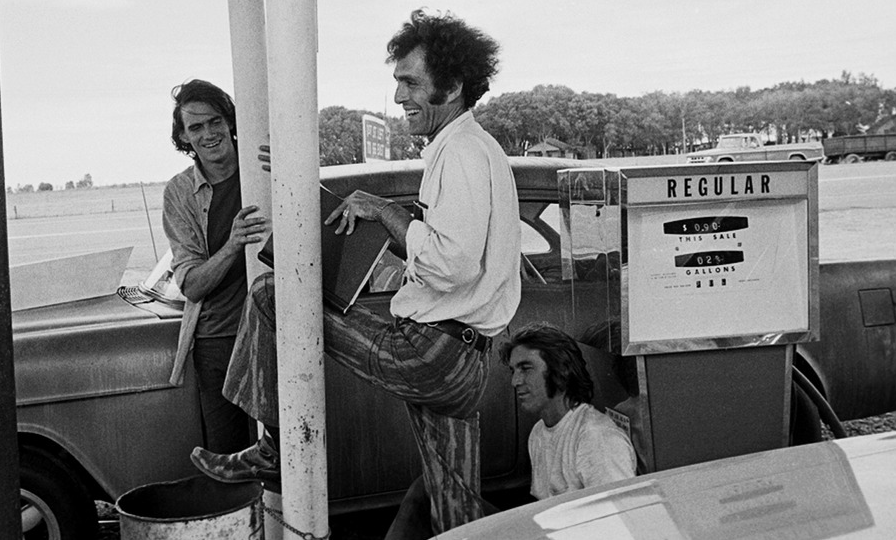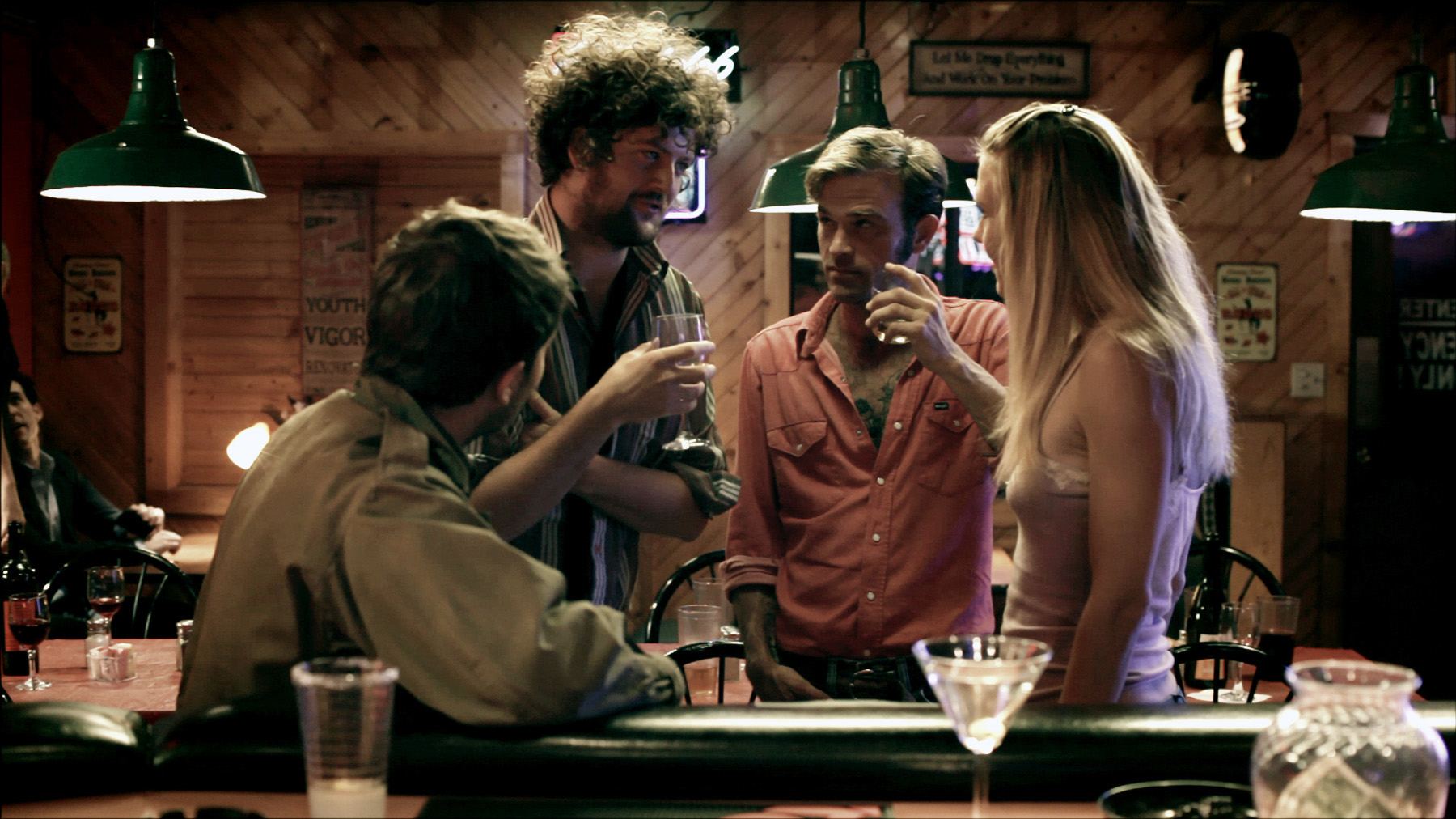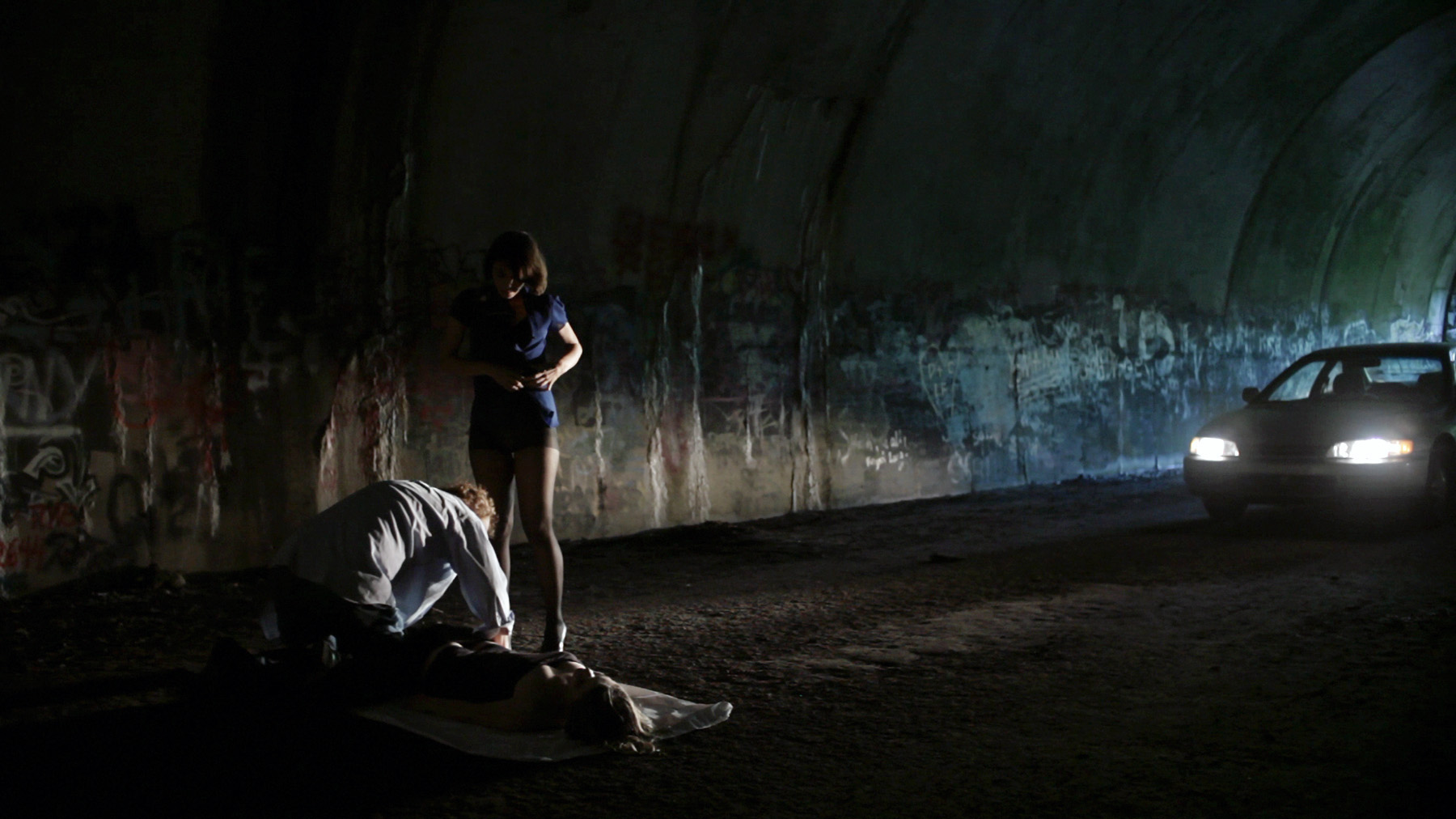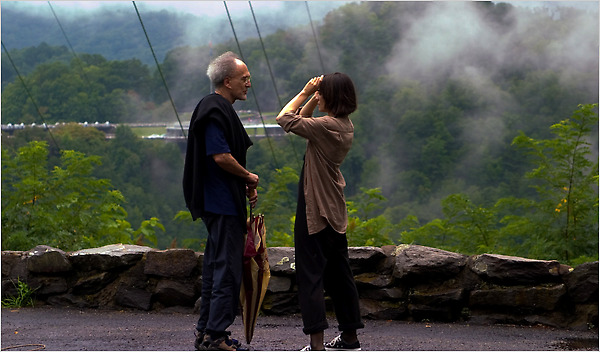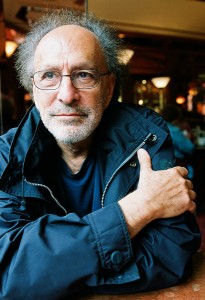 Like so many other directors, Monte Hellman cut his teeth at the Roger Corman School of Moviemaking. His first films were on-the-cheap genre pictures, like 1959’s man-in-suit monster movie Beast from Haunted Cave, and 1964’s red-blooded war movie Back Door to Hell. But it was the two Westerns he made with up-and-comer Jack Nicholson — 1965’s Ride in the Whirlwind and 1966’s The Shooting — that made his name, as far as Hollywood was concerned.
Like so many other directors, Monte Hellman cut his teeth at the Roger Corman School of Moviemaking. His first films were on-the-cheap genre pictures, like 1959’s man-in-suit monster movie Beast from Haunted Cave, and 1964’s red-blooded war movie Back Door to Hell. But it was the two Westerns he made with up-and-comer Jack Nicholson — 1965’s Ride in the Whirlwind and 1966’s The Shooting — that made his name, as far as Hollywood was concerned.
The success of those two films paved the way for Hellman’s lasting contribution to American cinema: Two-Lane Blacktop. It seemed tailor-made for its times. Two counterculture loners drifting across America’s lonely highways recalled Easy Rider, which had been a smash hit two years earlier. The film starred two pop music icons: James Taylor in his first and only film role, and The Beach Boys’ Dennis Wilson. Both were at the height of their fame. Then there were the custom and muscle cars, the complex relationships between men & women and youth & establishment, and a portrait of America at the crossroads.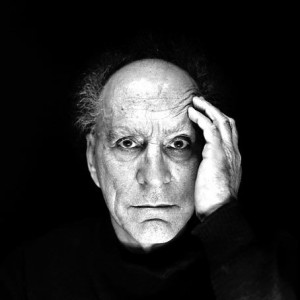
But Two-Lane Blacktop is far more introspective, quiet, and expectations-defying than its ilk. No cool rock soundtrack. No existential dialogue. No archetypal characters. And while its ending is as emotionally violent as Easy Rider, it’s far more challenging and incendiary.
The film would go on to achieve cult status before being canonized as one of the benchmark works of the New Hollywood. (The Criterion Collection released Two-Lane Blacktop on Blu-Ray on January 8th, 2013.) But the film would also prove to be a financial bomb, and Hellman never achieved the kind of popular success that propelled his colleagues into the upper strata of Hollywood. Instead, he continued making films for Corman, culminating with Cockfighter in 1974, then independent films and some direct-to-video work (like Silent Night, Deadly Night III: Better Watch Out!). His most recent film, 2010’s semi-autobiographical Road to Nowhere, played the festival circuit and was heralded as Hellman’s return to movies (his last film being 1989’s Silent Night III). But it was shot on a microbudget using Canon DSLR cameras — hardly a big-time comeback for a filmmaker who has achieved an outsize reputation.
Camera In The Sun spoke to Hellman in the summer of 2011 following a double-feature screening of Road to Nowhere and Cockfighter at the Film Society of Lincoln Center.
Was the Lincoln Center screening of Cockfighter done from a tape?
Unfortunately, the prints are all horribly faded. And even as imperfect as it was last night, it’s better than watching these faded prints.
Does the limited availability of Cockfighter have to do with the actual cockfighting scenes?
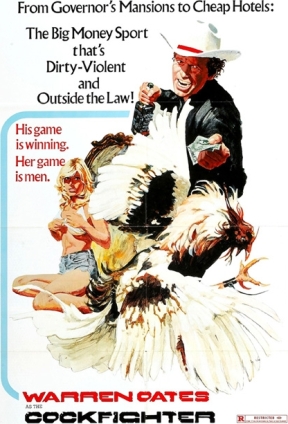 No, no. There was a great DVD, but it’s just out of print. It’s just a question when somebody gets the rights to something like that, it usually runs seven years. And then after that, it’s gone. You gotta buy things fast.
No, no. There was a great DVD, but it’s just out of print. It’s just a question when somebody gets the rights to something like that, it usually runs seven years. And then after that, it’s gone. You gotta buy things fast.
Was Cockfighter the last movie you made with Roger Corman?
Cockfighter was the last, yeah.
Why was Cockfighter your last film with Corman?
That was barely him. I don’t know how it happened, but I needed him to be signatory to the Director’s Guild and all of that. And I was under the impression that he was. And I was under the impression that my assistant director and production manager were DGA, and they weren’t. And I almost got kicked out of the union as a result of it.
What was your relationship like with Corman from Beast From Haunted Cave to Cockfighter?
Well, we’d done a lot of things in between. He was involved with the two Jack Nicholson Westerns. I worked on The Wild Angels, and What’s in it for Harry? and The St. Valentine’s Day Massacre. Also, extra scenes for a lot of pictures that he needed to expand for television. They were 60-minute second features for theaters. And then for television, they had to be 70 minutes.
What was the value of Corman to your generation of young filmmakers?
He was the only way people could get a start. He was the only game in town. And it was great. He performed a great service to the world by giving some talented people like [Martin] Scorsese a chance to make their first movies.
What did you learn from working with Corman?
Well, I think the biggest thing was realizing the kind of myth of the budget. Roger never had budgets. Roger would have a price that he was willing to spend on a movie. With the shooting on Ride In The Whirlwind, he said, “OK, here’s $150,000 for the two movies. Just come back and give me the movies.” 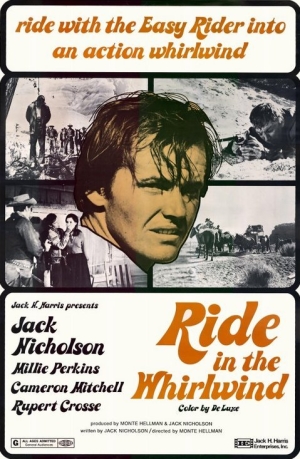 And budget is just a complete fallacy. First of all, it’s a guess, and everybody tries to protect themselves by guessing high. And then the studio said, “Well, that’s too much. I can’t make it for that.” And so you keep whittling it away until it’s then too low. And then you go over budget.
And budget is just a complete fallacy. First of all, it’s a guess, and everybody tries to protect themselves by guessing high. And then the studio said, “Well, that’s too much. I can’t make it for that.” And so you keep whittling it away until it’s then too low. And then you go over budget.
Does working under the constraints of a budget hamstring you as a director?
Having these kind of limitations just sharpens you. And having time constraints — I think people who have unlimited time and unlimited money are in an unfortunate situation, because they don’t have anything that keeps them kind of on their toes.
What do you look for when scouting locations?
Casting locations is much the same as casting actors, or casting cinematographers or composers. But in some cases, they just go with the territory. Like in Cockfighter, we were shooting in Georgia, and we just had to find real ranches where they raised the cocks and real rings where they had the fights. And so that was pretty simple. And other times, like in Two-Lane Blacktop, we did the same trip in advance and there specifically chose the gas stations and part stores or whatever that we were shooting. And so there, there were more crucial choices to be made. In the case of Road To Nowhere, in addition to everything else, it’s a memoir. And so, except for the actual “road to nowhere” and the locations around it, which were specific to the idea of the story — that tunnel, which is such a great set — is the real end of the real road to nowhere. So that was there, and it was wonderful. But some of the other locations, some the locations in Italy in particular… There were a lot of choices to be made in London, but in Italy it was places that I knew from experience. I lived in that hotel. Every time I go to Rome, I visit Michelangelo’s Moses. I go to the Sant’Eustachio coffee shop. And so that was easy. I just wanted to shoot places that were important to me.
Does a location having a lived-in quality factor into your scouting process?
Yeah, the two key gas stations in Two-Lane Blacktop were just unbelievable, they’re so colorful. Particularly the one with the Indian totems. I mean, you couldn’t build that like that. And so those are 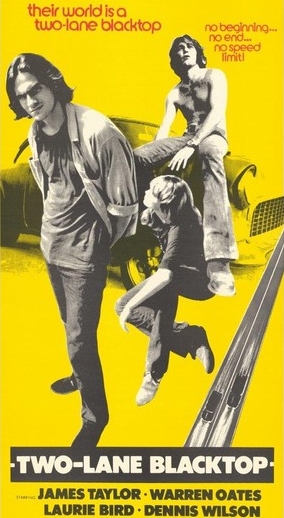 just lucky chances to even find them to begin with. All that, it’s so important a part of it. And I get stimulated by locations like that. It’s a give and take. You discover it, and then you start to shoot there, and it’s like a constant just stimulation of images and feelings that you get out of it.
just lucky chances to even find them to begin with. All that, it’s so important a part of it. And I get stimulated by locations like that. It’s a give and take. You discover it, and then you start to shoot there, and it’s like a constant just stimulation of images and feelings that you get out of it.
Does it ever dictate changes to what you set out to do when you got there?
The greatest thing that can happen is accidents. You know, when things happen that you don’t expect to happen. And that tunnel was such a powerful thing for the actors. And Shannyn [Sossamon] had a kind of revelation in the shooting of one of her key scenes there, where she just put herself in touch with her subconscious. And after six normal takes, she came up with something that was so astounding, it literally changed the whole course of the movie.
What appeals to you about “the road” as a metaphor in film?
I think every good movie is a road movie, in the sense that it’s part of external reality. And it’s what separates movies from theater. There’s a great film theoretician, Siegfried Kracauer who wrote a book called, ironically, Theory of Film in which he talks about that. He says, if you are just on a set with four walls and no window to the real outside world, it’s not a movie. This is where life takes place. I mean, look at great movies like Children of Paradise, the “Boulevard of Crime.” It’s all about the street.
With regard to genre, do you seek to subvert the idea of Noir in your films?
I love the genre of Noir. If I have a choice between seeing two movies, and one’s a Noir, I’ll go to the Noir. But beyond that, I kind of react against the simplicity of the “White Hat” and the “Black Hat.” I like shades of gray. And so if I subvert anything, it’s in the direction of making things a little more complicated than just simply the good guy or the bad guy. I think everybody’s a little of both.
Is there a reason your films seem to be light on exposition?
I guess I have a kind of a realistic bone that functions, and I don’t like to have dialogue that is unnaturally expositional. People don’t use exposition in real life. Just as an example, if you’re living  with somebody, you don’t wake up in the morning and say, “Hello, Joan” or whatever the name may be. It’s a continuation of the conversation from the day before. And so people don’t even use names. People think it was an affectation not to have names of the characters. But people don’t call each other, unless they are trying to get somebody’s attention from far away.
with somebody, you don’t wake up in the morning and say, “Hello, Joan” or whatever the name may be. It’s a continuation of the conversation from the day before. And so people don’t even use names. People think it was an affectation not to have names of the characters. But people don’t call each other, unless they are trying to get somebody’s attention from far away.
How did you alter the autobiographical elements of Road to Nowhere?
Well, the big change was just in changing the names. We said, “OK, it’s not gonna be Steve and Monte anymore. That’s too cute.” Contrary to the way that [Federico] Fellini and Marcello [Mastroianni] worked on 8 1/2, where Marcello picked up the mannerisms of Fellini and tried to really be Fellini, I wanted Tygh to be Tygh Runyan. And that was against his instincts. You know, he played Stanley Kubrick for me. And he studied Kubrick very carefully, and listened to the way he talked, and tried to judge any kind of mannerisms that he could from seeing limited video footage and lots of stills, and so forth. I didn’t want him to use anything of me. I wanted him to use everything of himself.
Why did you decide to include the last shot of your crew filming him?
That was again his subconscious expanding the parameters of that shot. In the script, it said he picks up the camera, and he goes to the window, and he shoots the police. And that was all his creation. And he was actually shooting, and so we had that reverse angle. And it was a major decision to decide to use that, because the movie is already a movie within a movie within a movie. And that made it a movie within a movie within a movie within a movie, And so, it’s a shock. And lot of people said, “You can’t do it.” And we tried it, and it had a profound effect on early audiences that we tested it with. People were just moved by it. And they thought it was ghost-like and eerie. And it just led to all kinds of stuff in their reactions to it. And so we decided to go with it.
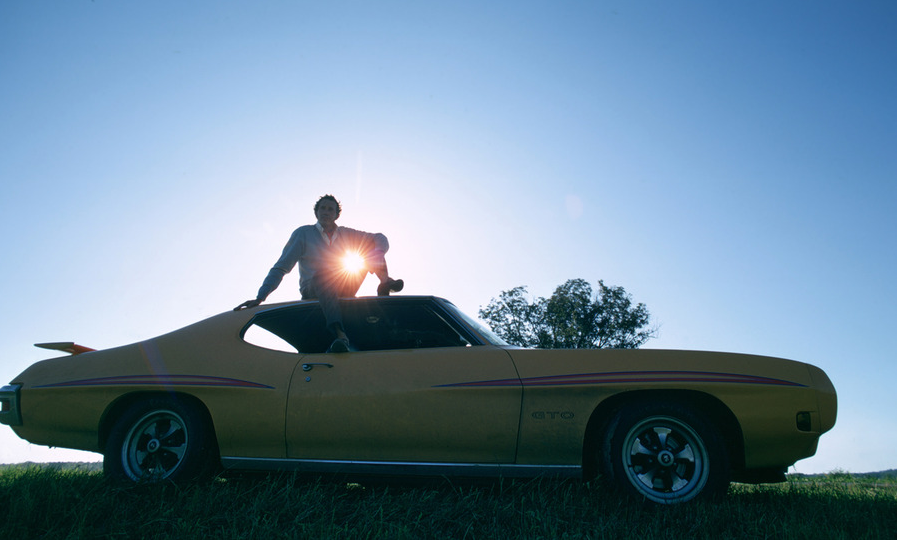
Was the ending Two-Lane Blacktop with a burning film shot also a difficult decision?
All those things are difficult decisions, because they’re just a way that you know what you’re doing is taking the audience out of the movie and making them aware that they’re watching a movie. And it’s one of those things you try to avoid. And in Road to Nowhere, it just came with the territory. There’s just so much of that within the movie where you stop and say, “Hey, don’t believe this. It’s only a movie.” And what’s amazing to me was to see how strong our need is to believe when we’re watching a movie. And even though we keep taking the audience out, as soon as it starts again, they are caught up in it instantly. It’s a phenomenal psychological effect. And we’re just so conditioned to going into a dark room, and the lights go out, and we see these images. And we believe because we want to believe. We want to have this experience.
What inspired you to shoot with the Canon?
Well, our original thought was to shoot with the RED, and we just felt this was better. I feel that there’s a kind of a chain reaction. I think somebody said that because this camera only cost $2,500, that somehow it must be inferior in some way. And then people pick up on that, and they keep repeating it. I think a lot of critics unfortunately do what students do, in the sense that they want to make their job a little easier, so they crib a little bit. And so there’s this idea circulating around that somehow these images are inferior. And the projectionist the other night just nailed it. He said, “Well, you know how we can tell when it’s film? When it’s got faults in it.” And it’s just the other way around. I mean, they just have no clue that this is the next stage. It’s not something that’s less good. It’s better, and it’s gonna get better and better. And then other people will nail it and say, “Wow, it looks like wet paint.” And it does. It looks more like the original dye transfer technicolor, which is a dye process, not a chemical process. That’s what these images look like. They don’t look like film. They look better than film. And then beyond that, they think that because we were doing an experiment in reality, and trying to get actors who didn’t act, but who were being themselves, that that’s somehow a less good form of acting. And in my mind, it’s the next step. It’s where we’re going. Because it’s heightened reality.
Did the camera make you approach your locations differently?
No, once we made the decision to go with this larger sensor, that just gave us much more creative control. In the sense that you can still stop down the lens and get your depth-of-field if you need it for that shot. But you can also get this tremendous, very sharp-pointed focus on the very specific area within, say, this can be as narrow as two inches. And anything outside of that two-inch area is gonna be out of focus. And it’s very exciting. But we had in the shot of the photograph of Shannyn, where only her mouth is in focus.
Are Canon cameras a viable alternative to HD video equipment?
It’s created a revolution, but it’s only the beginning. The technology is changing so fast. Now the RED Camera is coming out with this HDR camera, which gives you 18 stops of latitude. I mean, it’s gonna go on and on. The next Canon, I’m sure — if not the next one, then the one after — will have the ability to capture RAW images. It’s a revolution. Anybody who thinks that film is gonna be around in 10 years is crazy to me. If film has 13 stops of latitude, and hi-def is already at nine, 10 or 11, and then HDR is 18 — and then it’s gonna go from 2K to 4K to 5K. Lord knows where.
What do you think about 3-D technology?
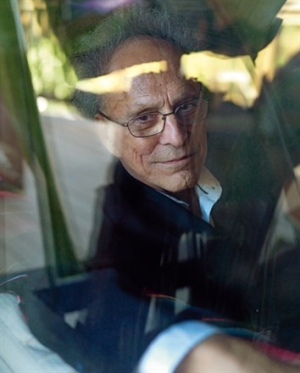 I think it’s counter-productive. It’s difficult, because if there’s anything that’s out of focus, it’s destructive to the 3-D feeling. But at the same time, when I’m looking at you in real life, my peripheral vision is out of focus. And this is what you get in two-dimensional cinema, where you have a narrow depth of field, and you can focus where you want, which is what you do in real life. I have to shift. I have to go from you to the wall, and then that’s in focus. But when I look at you, it’s out of focus. If you want people to be looking at different areas — foreground, middle ground, background — then for those shots you need to have a wide depth-of-field. And for other shots, you need a narrow depth-of-field. And this is part of the decision-making process.
I think it’s counter-productive. It’s difficult, because if there’s anything that’s out of focus, it’s destructive to the 3-D feeling. But at the same time, when I’m looking at you in real life, my peripheral vision is out of focus. And this is what you get in two-dimensional cinema, where you have a narrow depth of field, and you can focus where you want, which is what you do in real life. I have to shift. I have to go from you to the wall, and then that’s in focus. But when I look at you, it’s out of focus. If you want people to be looking at different areas — foreground, middle ground, background — then for those shots you need to have a wide depth-of-field. And for other shots, you need a narrow depth-of-field. And this is part of the decision-making process.
How did shooting with Canon still cameras change the way you approach depth-of-field
It’s a narrower depth-of-field than you normally have in movies. Because the size of the image in 35mm motion picture film is about a third the size of the image in 35mm still camera film. And it’s because in one case the film is vertical, and so the width of your image is the width of that frame within the sprockets. And then in still photography, it’s horizontal. And so then it’s the height that is that size, and the width is much bigger. And so that larger image then gives you, with those lenses, a narrower depth-of-field. And that’s what’s really exciting about it. But that’s what gives these images such a power.
This transcript has been slightly edited for grammar and flow.
